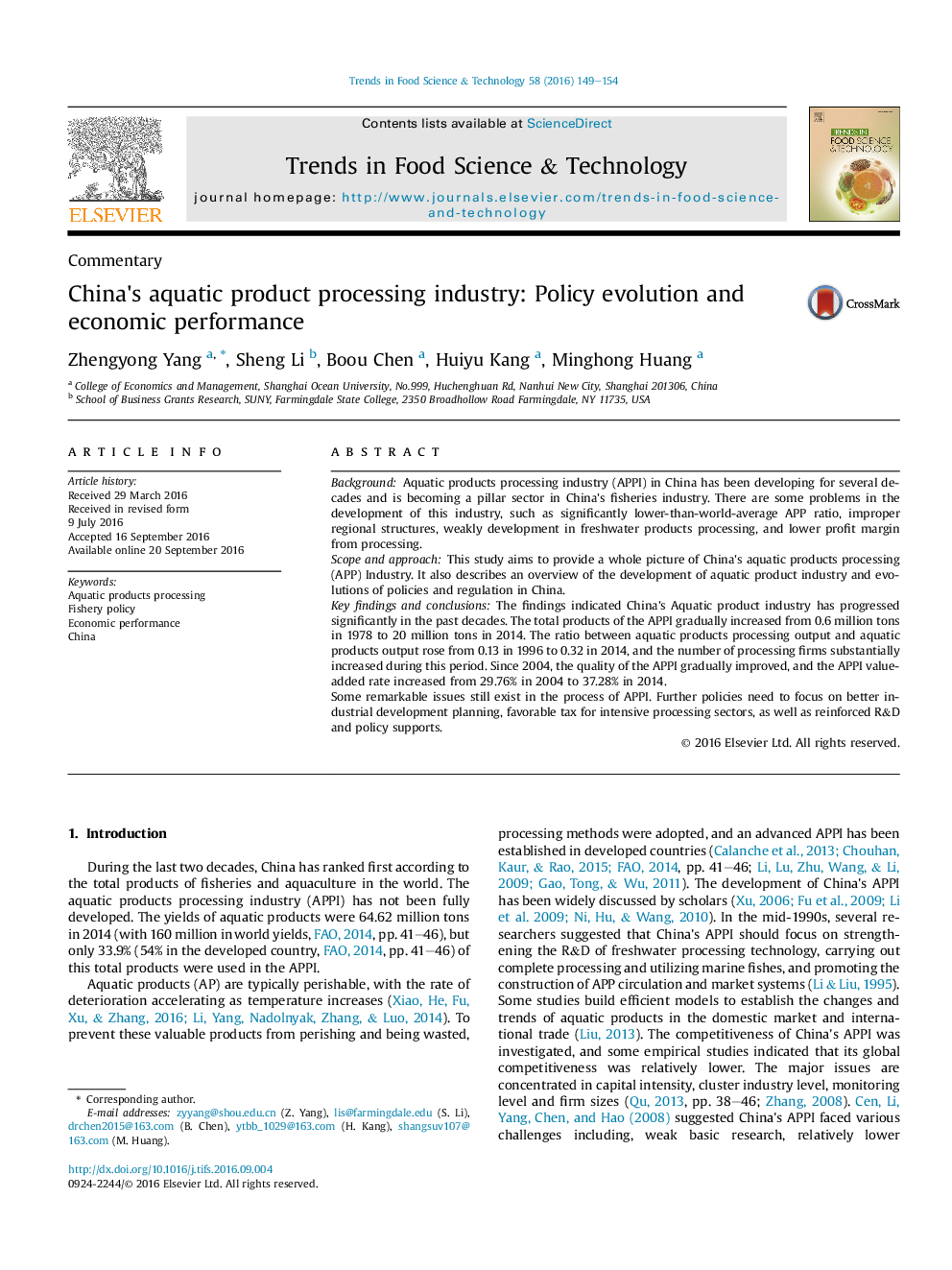| Article ID | Journal | Published Year | Pages | File Type |
|---|---|---|---|---|
| 5523816 | Trends in Food Science & Technology | 2016 | 6 Pages |
â¢A continuing study introduces new information regarding aquatic products processing industry in China.â¢A whole picture of China's aquatic products processing (APP) policy evolution is provided.â¢Quantitative analysis is used to estimate the economic performance of China's APPI.â¢Lower app rate, imbalance of regional development, and lower profit margin are three issues in development of APPI.â¢Better development plan, favorable tax for deep and intensive processing, and reinforced R&D might be solutions.
BackgroundAquatic products processing industry (APPI) in China has been developing for several decades and is becoming a pillar sector in China's fisheries industry. There are some problems in the development of this industry, such as significantly lower-than-world-average APP ratio, improper regional structures, weakly development in freshwater products processing, and lower profit margin from processing.Scope and approachThis study aims to provide a whole picture of China's aquatic products processing (APP) Industry. It also describes an overview of the development of aquatic product industry and evolutions of policies and regulation in China.Key findings and conclusionsThe findings indicated China's Aquatic product industry has progressed significantly in the past decades. The total products of the APPI gradually increased from 0.6 million tons in 1978 to 20 million tons in 2014. The ratio between aquatic products processing output and aquatic products output rose from 0.13 in 1996 to 0.32 in 2014, and the number of processing firms substantially increased during this period. Since 2004, the quality of the APPI gradually improved, and the APPI value-added rate increased from 29.76% in 2004 to 37.28% in 2014.Some remarkable issues still exist in the process of APPI. Further policies need to focus on better industrial development planning, favorable tax for intensive processing sectors, as well as reinforced R&D and policy supports.
